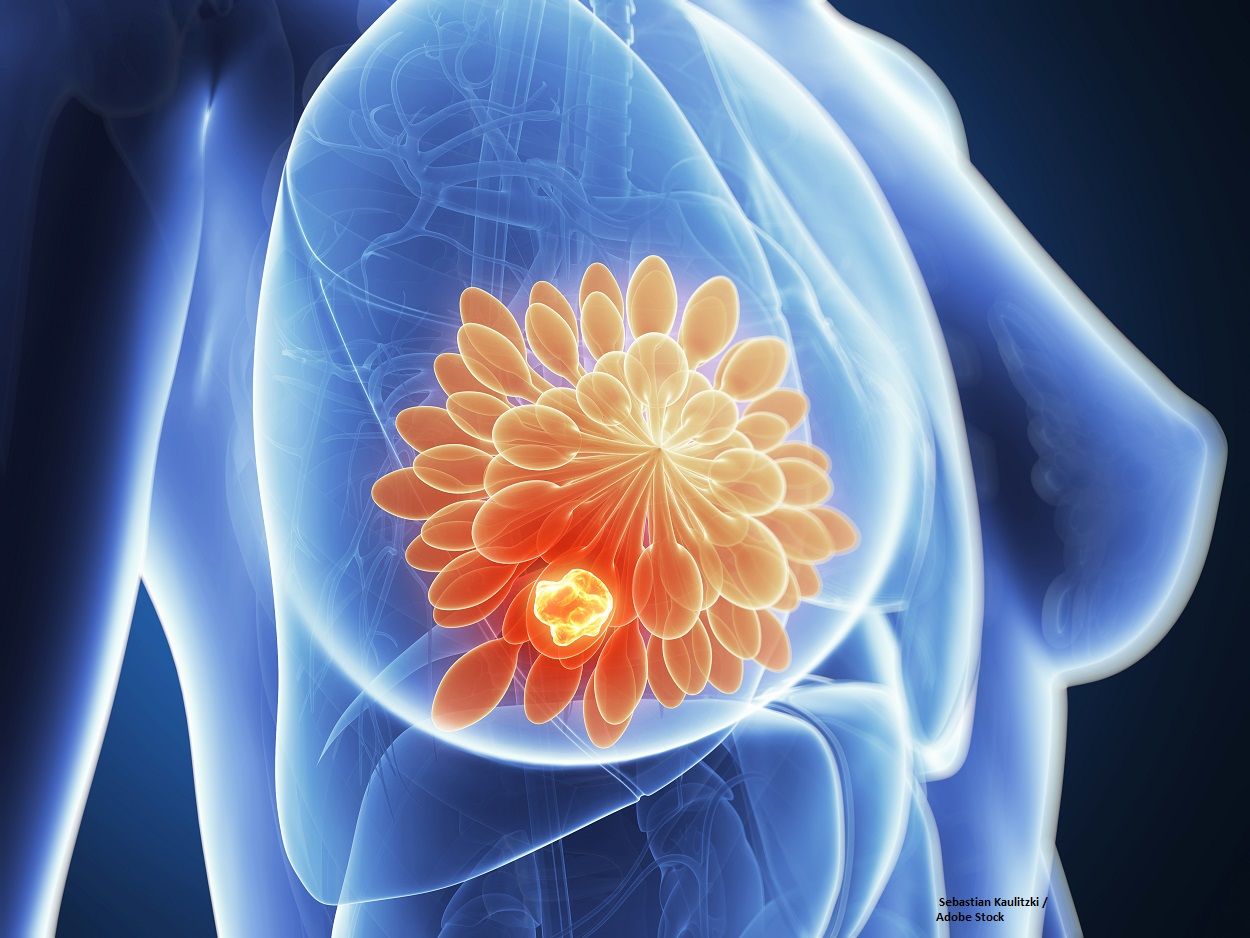Elinzanetant Reduces The Frequency of Hot Flashes in HR+ Breast Cancer
Elinzanetant met all primary and secondary end points when compared with placebo in patients with HR-positive breast cancer in the phase 3 OASIS-4 trial.
Elinzanetant met all primary and secondary end points when compared with placebo in patients with HR-positive breast cancer in the phase 3 OASIS-4 trial.

Topline results from the phase 3 OASIS-4 trial (NCT05587296) showed that elinzanetant (BAY3427080) met the primary end points of eliciting statistically significant reductions in the frequency of moderate to severe vasomotor symptoms (VMS) from baseline to weeks 4 and 12 compared with placebo in patients with hormone receptor (HR)–positive breast cancer or those who are at a high risk of developing breast cancer, according to a press release from the developer, Bayer.1
OASIS-4 was a double-blind, randomized phase 3 trial that evaluated the efficacy and safety of elinzanetant as a non-hormonal treatment for the treatment of VMS induced by adjuvant endocrine therapy in patients with HR–positive breast cancer.
Fatima Cardoso, MD, director of the breast unit at Champalimaud Clinical Center and principal investigator of the study said, “For women undergoing endocrine therapy against breast cancer, menopausal symptoms like VMS and sleep disturbances are very common and can significantly affect quality of life [QOL], potentially impacting treatment adherence. The positive results from OASIS-4 bring us one step closer to a much-needed non-hormonal option for managing VMS in [patients with] breast cancer and women at risk of breast cancer.”1
In addition to meeting its primary end points, all secondary end points, including a reduction in the severity of VMS at weeks 4 and 12, a VMS frequency reduction at week 1, and maintained reductions in VMS over the duration of the study period, were met. Menopause-related QOL and sleep disturbance data were also improved at week 12 compared with the placebo.
Over the 52 weeks observed in the OASIS-4 study, the safety profile remained consistent and comparable with prior studies and published data, with no new safety signals identified.
Further data are planned to be presented at upcoming medical conferences.
Investigated primary end points were mean change in frequency of moderate to severe hot flash from baseline to week 4 and baseline to week 12, as assessed by hot flash daily diary (HFDD).2 Secondary end points were mean change in severity of moderate to severe hot flash from baseline to week 4 and baseline to week 12 assessed by HFDD, mean change in frequency of moderate to severe hot flash from baseline to week 1 and from baseline over time assessed by HFDD, mean change in patient-reported outcomes of sleep disturbance from baseline to week 12, and mean change in menopause QOL scale total score from baseline to week 12.
The trial enrolled a total of 474 patients in 16 different countries who were randomly assigned to 1 of 2 groups. One group received elinzanetant immediately, and the other received placebo and then switched to elinzanetant.2 Per dosage, elinzanetant was given orally at 120 mg once daily, and placebo was matched orally.
Eligible patients were aged 18 to 70 with HR–positive breast cancer or a high risk for developing breast cancer who were also experiencing VMS symptoms caused by adjuvant endocrine therapy. Patients also had to have completed a HFDD for at least 11 days during the 2 weeks leading up to the baseline visit with at least 35 moderate to severe hot flashes recorded over the last 7 days the HFDD was completed.
Exclusion criteria included an initial diagnosis of metastatic HR–positive stage IV breast cancer or recurrence under adjuvant endocrine therapy; history of or current malignancy; surgery or non-surgical treatment for breast cancer within 3 months prior to signing informed consent; any ongoing condition that could cause difficulty in interpreting VMS like pyrexia, pheochromocytoma, or carcinoid syndrome; and a mammogram with clinically relevant malignant or suspicious findings that will require surgery, radiotherapy, or chemotherapy.
“Elinzanetant has consistently demonstrated positive results across all four phase 3 clinical trials that assessed the efficacy and safety for the treatment [of] moderate to severe [VMS] associated with menopause or caused by adjuvant endocrine therapy,” Christian Rommel, PhD, head of research and development and member of the Executive Committee of Bayer’s Pharmaceuticals Division, stated in the press release.1 “Importantly, OASIS 4 is the first pivotal international study to assess the safety and efficacy of a non-hormonal treatment approach for women with or at high risk of breast cancer who [have] VMS caused by adjuvant endocrine therapy, reaffirming our commitment at Bayer to advancing innovative treatments for the different needs of women and their health.”
References
- Elinzanetant meets all primary and secondary endpoints in phase III study OASIS 4 for treatment of moderate to severe vasomotor symptoms caused by breast cancer treatments. News release. Bayer. January 9, 2025. Accessed January 10, 2025. https://tinyurl.com/mvrymmyj
- A study to learn more about how well elinzanetant works and how safe it is compared to placebo for the treatment of hot flashes caused by anti-cancer therapy in women with, or at high risk for developing hormone-receptor positive breast cancer (OASIS-4). ClinicalTrials.gov. Updated December 27, 2024. Accessed January 10, 2025. https://tinyurl.com/5n7seb7p